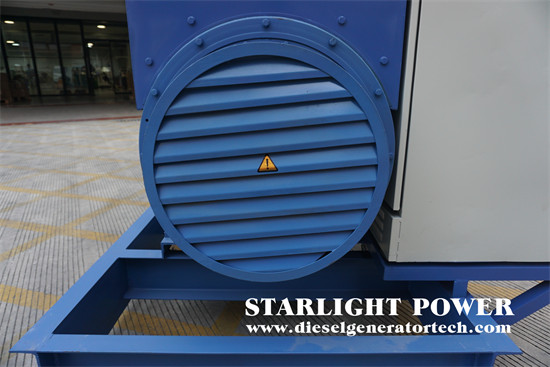In recent years, diesel generator sets have become more and more widely used in ships as backup power sources. Due to their performance advantages, diesel generator sets have become an important part of the propulsion system of ships with thousands of tons, especially military ships. So, what is the performance of the marine diesel generator set that has a good future? How does it work?

(1) Performance characteristics of marine diesel generator sets:
It is economical, easy to start, and has great adaptability to various types of ships. By the 1950s, diesel generators had almost completely replaced steam engines in newly constructed ships. Marine diesel generator sets have become the main power for civil ships, small and medium-sized ships and conventional submarines (see Ship Power Plant). Marine diesel generator sets can be divided into main engine and auxiliary engine according to their role in the ship. The main engine is used as the propulsion power of the ship, and the auxiliary engine is used to drive the generator, air compressor or water pump.
(2) Marine diesel generator set is a diesel generator used on ships. It works as follows:
A stream of fresh air is drawn or pumped into the engine cylinders and compressed to very high pressure by the moving pistons. When air is compressed, its temperature rises so that it can ignite a fine mist of fuel injected into the cylinder. The combustion of the fuel adds more heat to the charged air, causing expansion and forcing the diesel generator pistons to do work on the crankshaft, which in turn drives the ship's propeller through the other shafts.
The operation between two fuel injections is called a duty cycle. In a four-stroke diesel engine, this cycle is completed by four distinct strokes of the piston, namely intake, compression, expansion and exhaust. If we combine intake and exhaust with compression and expansion, a four-stroke engine becomes a two-stroke generator.
The two-stroke cycle begins when the piston rises from the bottom of its stroke (i.e. bottom dead center) with the intake port on the side of the cylinder open. At this time, the exhaust valve is also opened, fresh air is charged into the cylinder, and the residual exhaust gas from the previous stroke is blown out through the open exhaust valve. Valve blows out.
When the piston travels up to about a fifth of the morning of its stroke, it closes the intake and the exhaust valve closes, so both temperature and pressure rise to high values, and when the piston reaches the top of its stroke (i.e. top dead center), the fuel valve injects a fine mist of fuel into the high temperature air in the cylinder, the fuel burns immediately, and the heat causes the pressure to rise quickly. In this way, the expanding gas forces the piston to move downward during the power stroke.
When the piston moves down a little over halfway through its stroke, the exhaust valve opens and hot gas begins to flow out through the exhaust valve due to its own pressure, aided by fresh air coming in through the intake. The air intake is opened as the piston descends further. Then another cycle begins again.
In a two-stroke engine, one crankshaft revolution does one power stroke, while a four-stroke engine requires two crankshaft revolutions to make one power stroke, which is why a two-stroke engine can do about twice as much as a four-stroke for the same size The reason for the work done by the engine. In current actual use, with the same cylinder bore and the same speed, the output power of a two-stroke engine is about 80 percent higher than that of a four-stroke engine. This increase in engine power makes two-stroke generators widely used as the main engine of large ships.
The above content is the analysis of the performance characteristics and working principle of marine diesel generator sets. I hope it can provide help for the majority of users in need, and can more fully understand the relevant knowledge of marine diesel generator sets. If you would like to get more information welcome to contact us via [email protected].
Copyright © Guangxi Dingbo Generator Set Manufacturing Co., Ltd. All Rights Reserved | Sitemap
Update cookies preferences